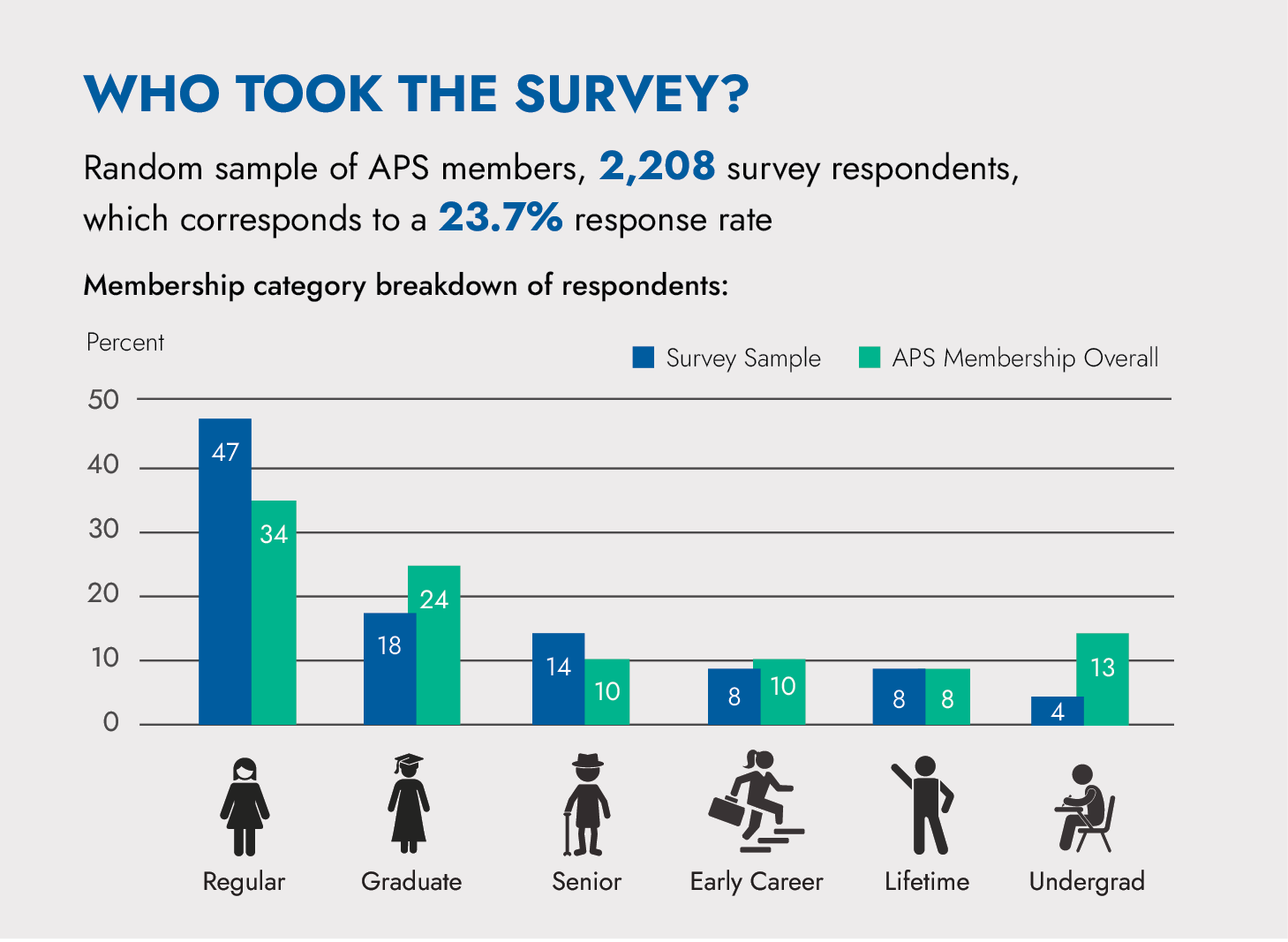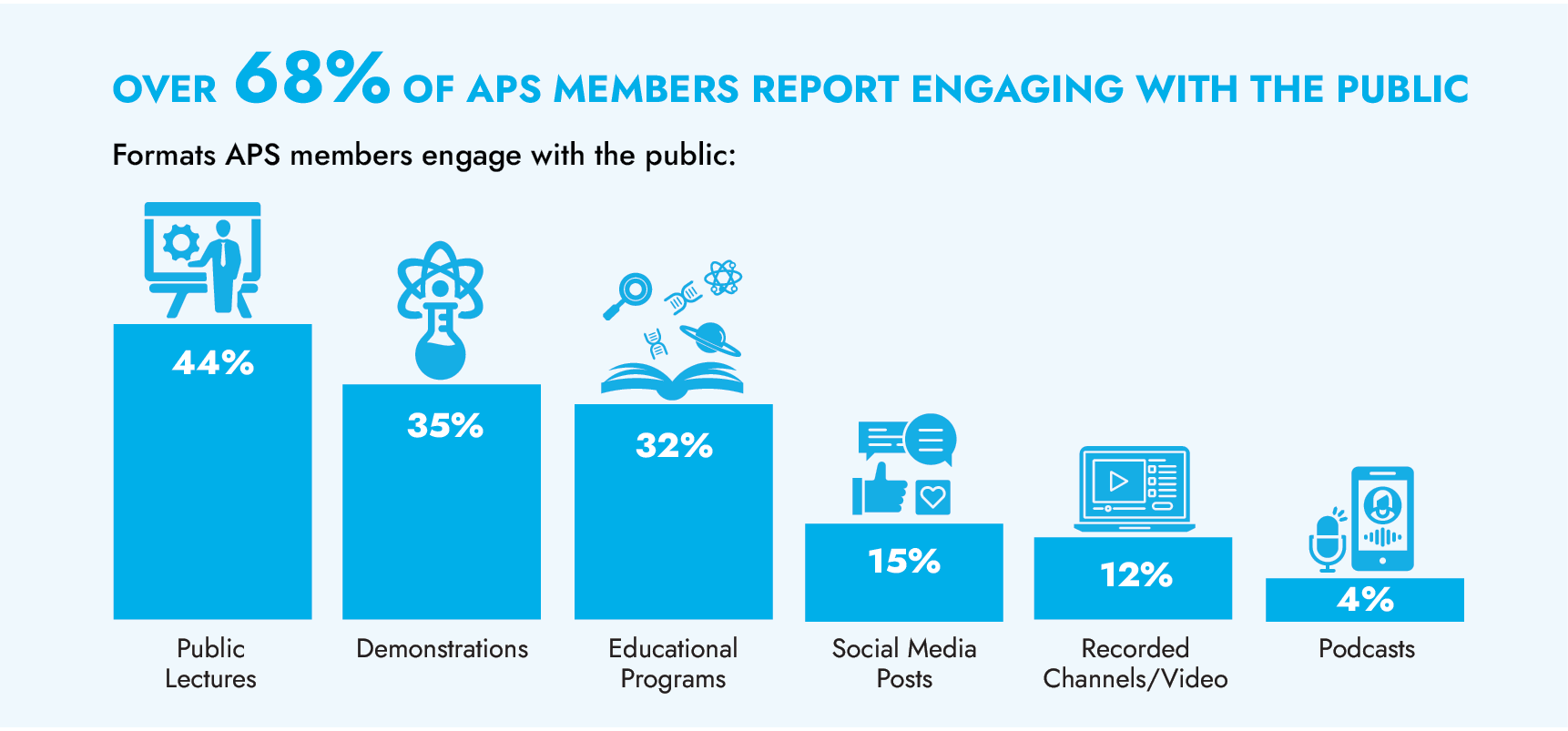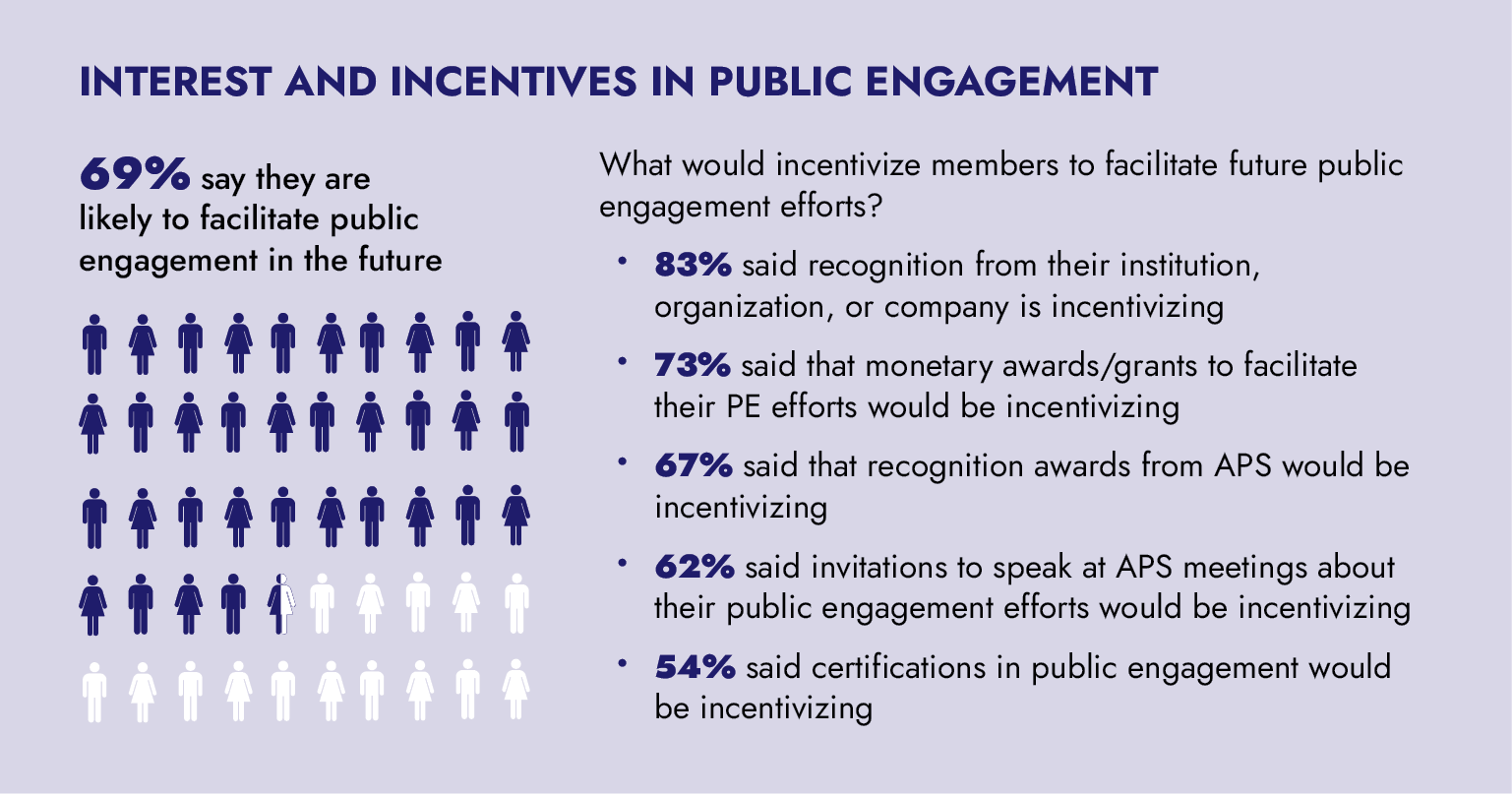APS Member Survey on Public Engagement
Address misinformation about science
Join the Science Trust Project and learn skills necessary to address misinformation and disinformation.
Register for the mailing list to learn of upcoming STP events
Connect with other physicists on public engagement
The Joint Network for Informal Physics Education and Research (JNIPER) brings together professionals participating in public engagement.
Register for the mailing list to learn of upcoming JNIPER events
Survey Responses

The survey drew from a random sample of APS members, with 2,208 survey respondents, which corresponds to a 23.7% response rate.
Of the survey respondents, 47% were regular APS members, compared to regular members making up 34% of APS membership. Eighteen percent of survey respondents were graduate student members, and graduate student members make up 24% of APS membership. Fourteen percent of respondents were senior members, and senior members make up 10% of APS membership. Eight percent of respondents were early career members, who make up 10 percent of APS membership. Eight percent of respondents were lifetime members, which also make up 8% of APS membership. Only 4% of respondents were undergraduate members, and undergraduate members make up 13% of APS membership.
Perceived Value of Public Engagement

Ninety-two percent of members who have facilitated public engagement report a positive experience. Seventy-six percent of respondents said most public engagement efforts tend to have a positive effect on broader scientific progress. Sixty-eight percent of respondents report that most physicists think it is important to engage with the public.
Members report positive effects of their public engagement on their teaching skills (85% report positive effect, 15% neutral), professional development or career progress (60% report positive effect, 37% neutral), and their own research (49% report positive effect, 45% neutral).
Participation in Public Engagement

Over 68% of APS members report engaging with the public. Formats APS members use to engage with the public include:
- Public lectures: 44%
- Demonstrations: 35%
- Educational programs: 32%
- Social media posts: 15%
- Recorded channels and video: 12%
- Podcasts: 4%
Interests and Incentives in Public Engagement

When APS members were asked, "What would incentivize you to facilitate future public engagement efforts" they responded with the following incentives:
- Recognition from their institution, organization or company: 83%
- Monetary awards or grants to facilitate public engagement efforts: 73%
- Recognition awards from APS: 67%
- Invitations to speak at APS: 62%
- Certifications in public engagement: 54%
Sixty-nine percent of respondents said they are likely to facilitate public engagement in the future.
Barriers to Public Engagement

There are a number of challenges members face:
- Only 40% of respondents report current access to financial resources to facilitate public engagement efforts
- Only 42% reported some access to training in public engagement skills
- Forty-eight percent said they would need more time to do public engagement
Some of these challenges are especially faced by students, early career members, and those from underrepresented groups. Members of an underrepresented group were more likely to indicate they would need additional access to financial resources to facilitate public engagement in future (differences between groups are statistically significant at the alpha = 0.05 level.)
APS early career or graduate members were more likely to be discouraged from facilitating public engagement in the past three years.
